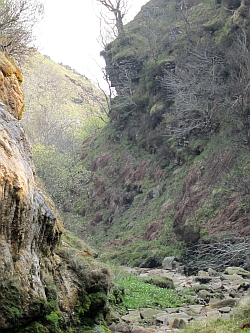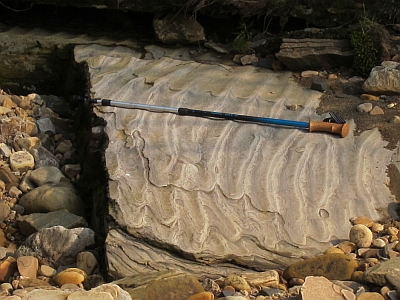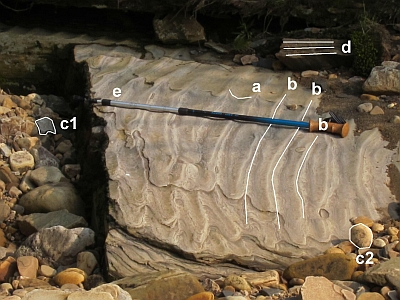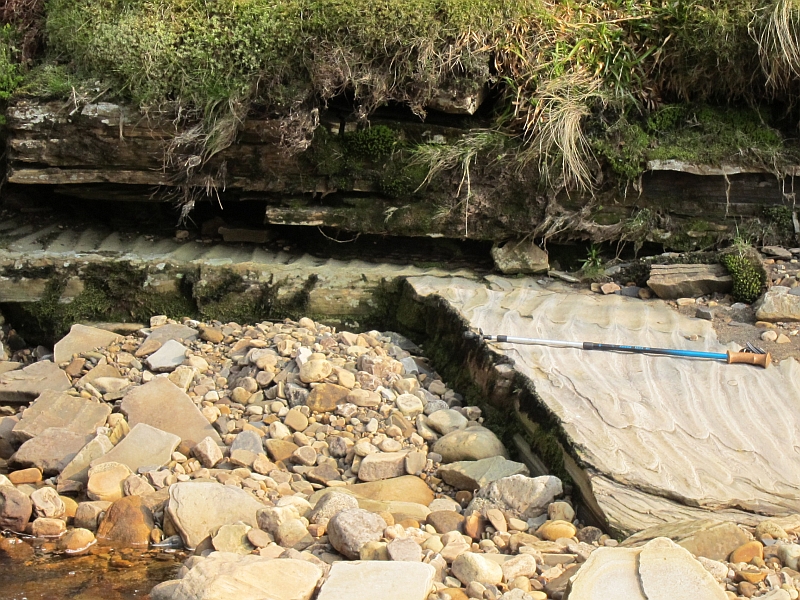The photo shows ripple marks in medium-grained deltaic sandstone
of Namurian age. Travel up any of the river beds onto the
Millstone grit and these features are common in the sandstones.
They provide geologists with useful information about
palate-environments. Ripple marks are found in many environments
e.g. tidal flats, beaches, lakes, seas and rivers. The water
depth can vary from very shallow down to a depth of 200m. There
are many factors that control the size of the ripples. The three
most common are the coarseness of the grain, the water depth and
the intensity of the waves.
The ripple marks can provide information about the water that
created them. There are two main groups of water ripple marks
shown in the diagram below.
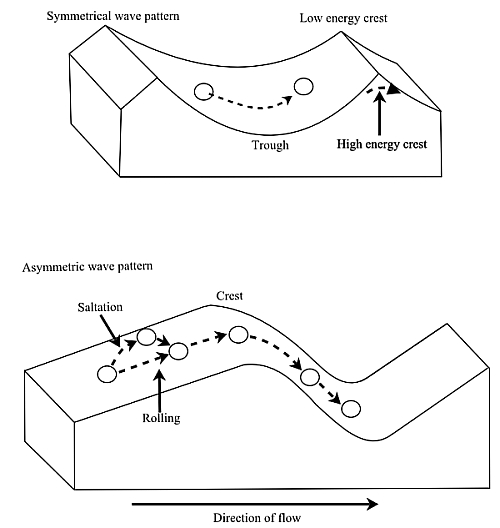
The photograph shows a symmetrical wave pattern (a) which
indicates a marine environment. It is like the first diagram
with the crests removed. This reflects a higher energy
deposition. The second diagram shows an asymmetrical wave
pattern formed in a river. The steeper slope of the wave points
downstream. Ripple marks can also be useful in working out the
way up of a rock sequence.
The river in the photo shows a river bed with a number of water
worn boulders. This rounded appearance is due to three elements
of erosion, attrition, corrosion and solution. These boulders
are part of the bedload of the river that is being carried to
the sea and deposited. The angular boulder (c1) is a very hard
limestone which shows smooth, water worn surfaces. The boulder
marked (c2) is of softer sandstone. It’s almost spherical form
is a result of corrosion and attrition as it collides with other
boulders and the river bed.
|
